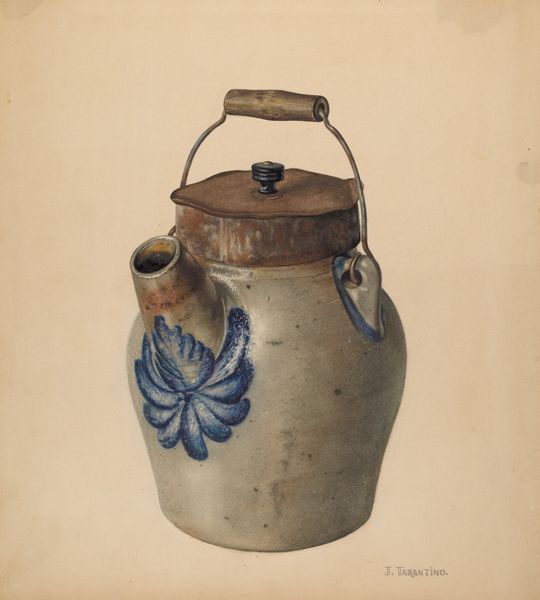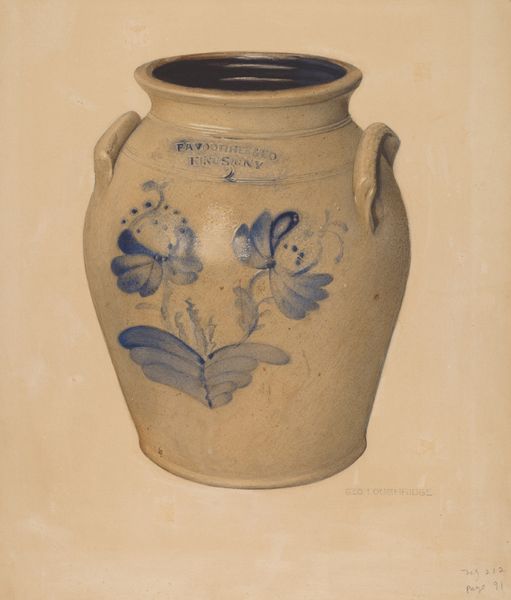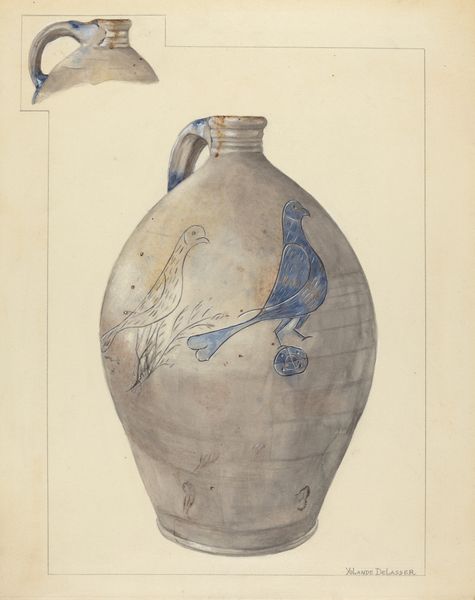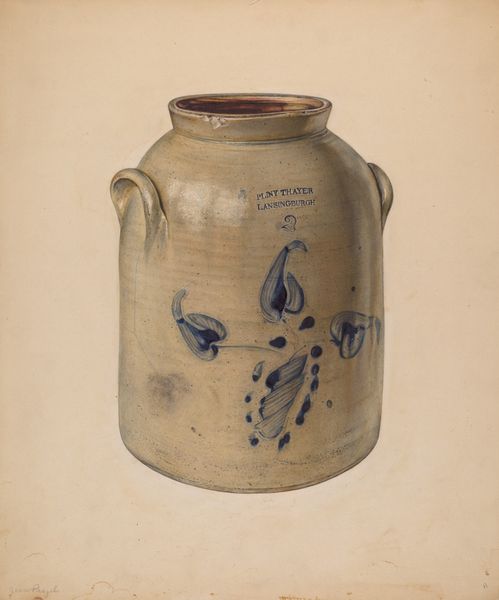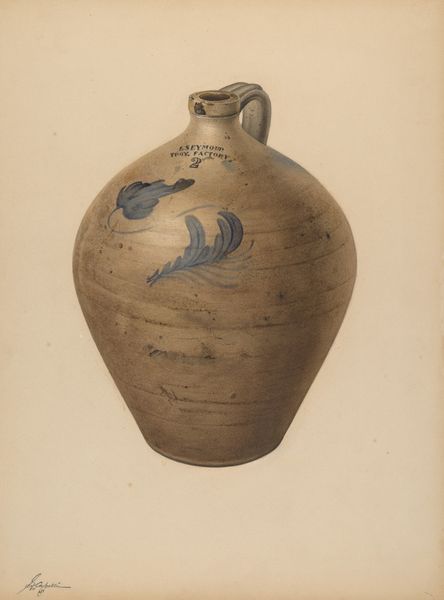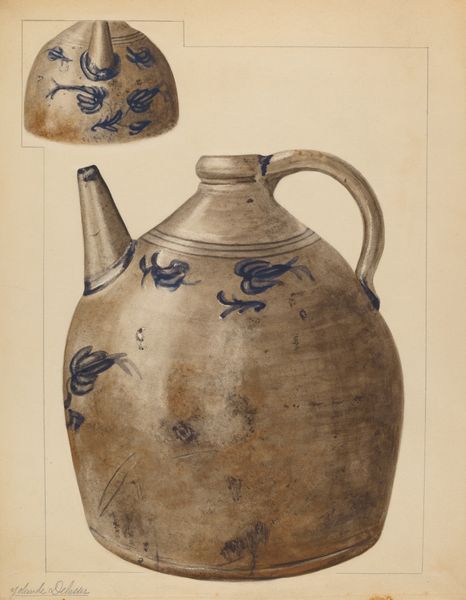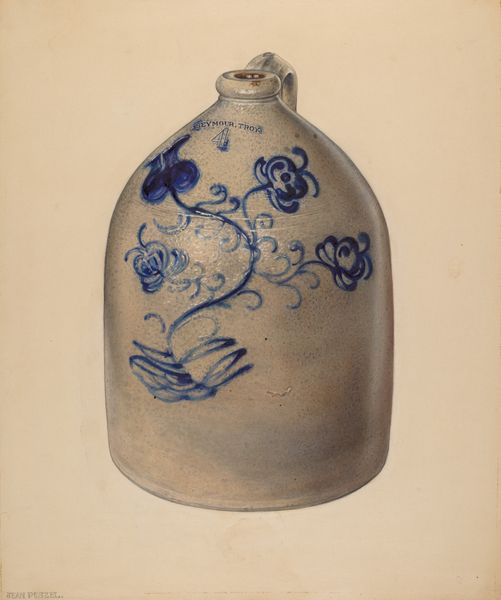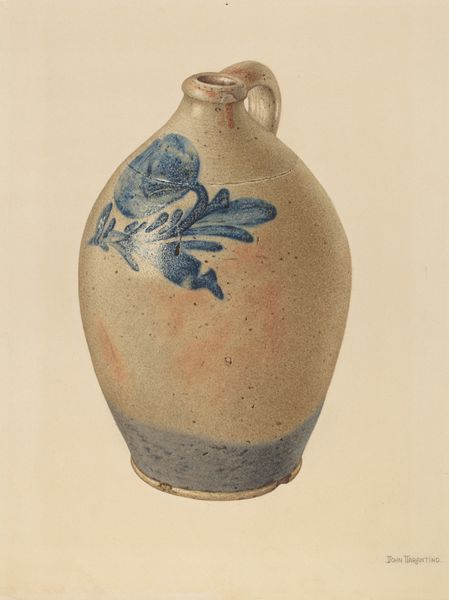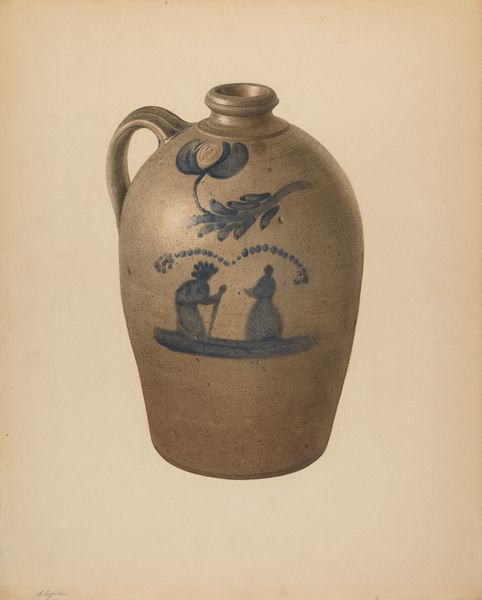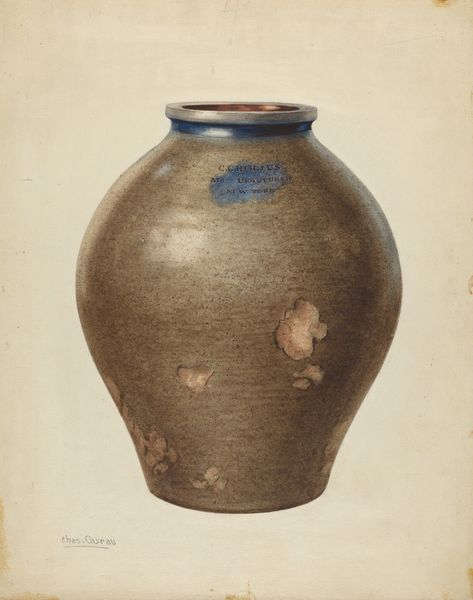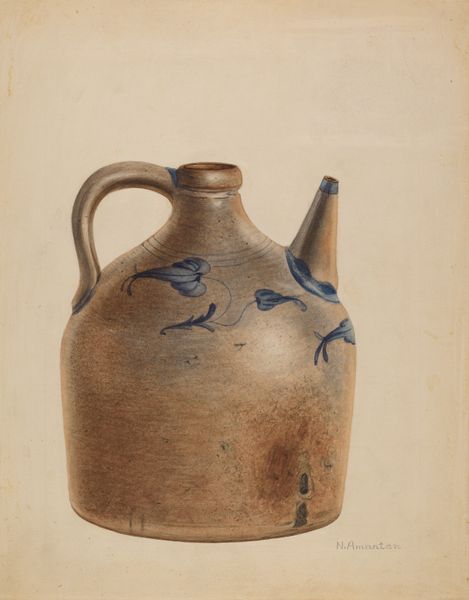
drawing, watercolor
#
drawing
#
water colours
#
watercolor
#
watercolor
#
realism
Dimensions: overall: 45.8 x 38 cm (18 1/16 x 14 15/16 in.) Original IAD Object: 10" High 6 1/2" Dia(base)
Copyright: National Gallery of Art: CC0 1.0
Curator: John Tarantino's "Batter Jug," dating from around 1938, presents a seemingly simple domestic object rendered in watercolor. Editor: It has such a hushed, quiet feel, almost meditative. And a bit melancholic, if I'm honest. It's not just a batter jug, is it? Curator: Certainly not, but that sentiment speaks to the artist’s approach. Tarantino, known for his social realism, often imbued everyday objects with symbolic weight, prompting reflection on class, labor, and the human condition during the Depression era. The "Batter Jug" can be seen through that lens, especially noting the inscription, "Guldens & Wilgus, Harrisburg." It is not just the depiction of domestic life. The location is telling of labor opportunities and struggles in the region. Editor: Guldens & Wilgus. It sounds like it could be the name of an early 20th-century American tale of love, loss, and cornbread. Watercolor. The piece renders a worn and perhaps once beloved, ceramic object into soft lines, yet with all its dents and aged surface, its history, almost calling to another time... it gives the inanimate form some memory and depth of story. Curator: Absolutely. And let's consider the watercolor medium. Watercolor’s delicate nature amplifies the sense of fragility and impermanence, doesn’t it? Given the socio-economic landscape, what does it say when considering materiality in Depression-era America, considering the objects held by people and that may even give a nod toward American folk art traditions through the tulip decoration? Editor: It feels strangely personal. Like I've seen it sitting on someone's kitchen counter somewhere...or even inherited it myself. It's an object loaded with associations. But there is also the question: Why immortalize *this* batter jug? I am really drawn to how ordinary objects carry unspoken narratives of their existence and history. I really love that folk tulip motif painted in the piece—did you see a reflection to the culture from where such forms originated? Curator: A good question that pushes into immigration and craft tradition and folk traditions as well. And yet the reality that someone such as John Tarantino captured *this* *one* shows just how far his legacy still affects us when considering the role of the labor force in American work traditions and artistic expression. Editor: So even now, so many decades later, we continue to project onto simple jugs… Fascinating.
Comments
No comments
Be the first to comment and join the conversation on the ultimate creative platform.
